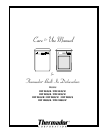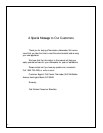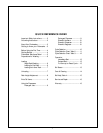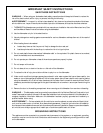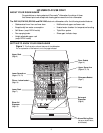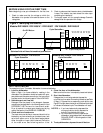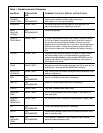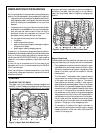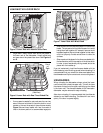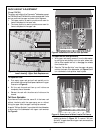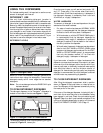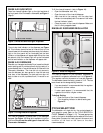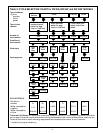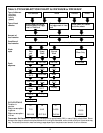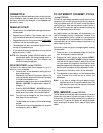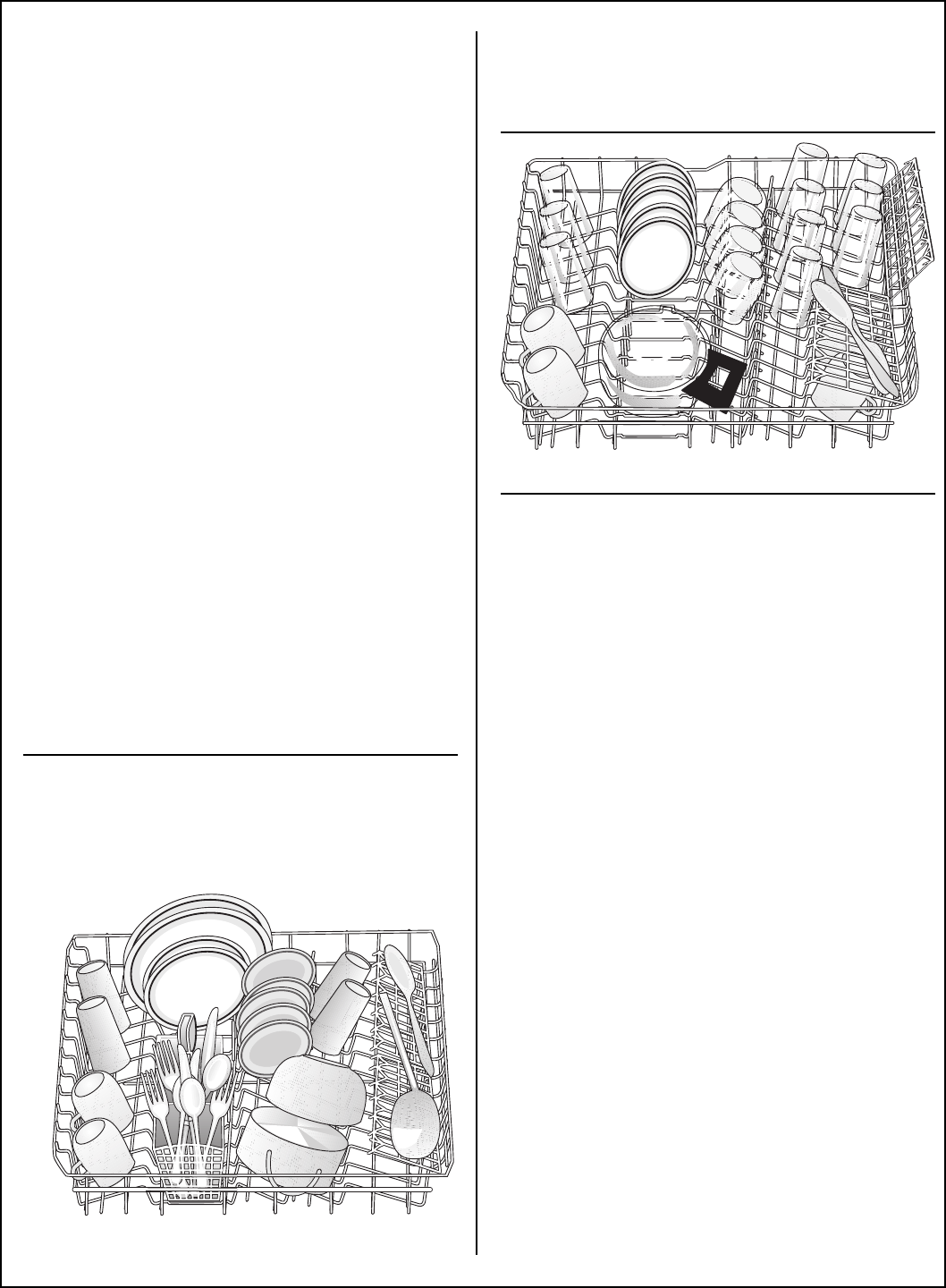
PREPARATIONS FOR WASHING
Very little preparation is required before placing dishes, pots,
pans, etc. into the dishwasher. Some preparation is required:
• Large solid items, such as bones, large seeds, shells, skins,
leafy vegetables, meat trimmings etc., should be removed
either by scraping into a wastebasket or into your food
disposer.
• Large amounts of any type of leftover food should also
be scraped into a wastebasket or into your food disposer.
• Pots and pans that have burned-on food, the food is
blackened, should be presoaked and scoured. The
dishwasher cannot remove burned-on food.
• Do not place the following items in the dishwasher:
> toothpicks
> small bones and bone slivers
> paper products such as paper plates, paper napkins,
containers with labels.
> plastic bags or plastic packaging material.
In general, try to remove food scraps and place the items to
be washed in the dishwasher before the food has had a chance
to dry-on. Dried-on food is more difficult to remove and you
may find that the DELICATE/ ECONOMY or lighter washing
cycles will not provide a satisfactory result when food has
dried on.
If there will be an extended period of time before the
dishwasher will be run it is recommended that the RINSE &
HOLD cycle be used.
Other than the above, no special preparation or pre-rinsing
is required for dishes, pots and pans or utensils with normal
amounts of food soil.
Regular Wash Load
The dishwasher should be loaded so that water can circulate
freely and reach every part of every item that is to be cleaned:
• Cups, glasses and containers should be placed in upper
rack upside down so that water does not collect in them.
Tall narrow vessels, such as a vase or tall glass, should be
placed in the lower rack, near the middle, for the best
cleaning result.
• The Thermador
®
dishwashers have a special feature
incorporated into the flip-down cup shelves on the side
of the upper rack, as shown in Figure 4. The ends of
these shelves are specially formed to help maintain
spacing between stemmed glasses. When in the flipped
down position, long-stemmed glasses may be placed in
the second row from the edge and placed so their stems
rest in the “V” formed ends of the shelves. When the
cup shelves are in the up position long stemmed glasses
may be placed in the first row with their stems placed to
rest between the tooth like projections of the shelves.
• China, crystal and other delicate items must be placed
so that they do not touch each other during dishwasher
operation. Chipping or other damage may occur.
• At completion of loading of the upper rack check to
make sure that nothing is protruding through or hanging
beneath the bottom of the rack, which could block the
rotation of the spray arm.
Figure 3. Upper Rack with Mixed Load
Figure 4. Upper Rack Using Flip-Down Shelf
LOADING
LOADING THE TOP RACK
The upper rack of the dishwasher has been designed with
flexibility in mind. Glasses, cups, plates, bowls and small pots
may be loaded in many different positions to fit your needs.
The upper rack height is adjustable to allow more height for
tall items in the upper rack (low level) or for tall items in
lower rack (high levels). Refer to Page 8 for changing rack
position.
6



